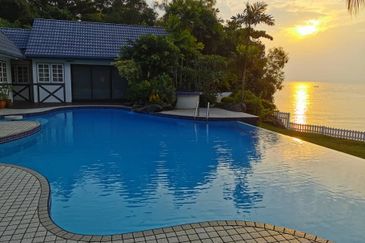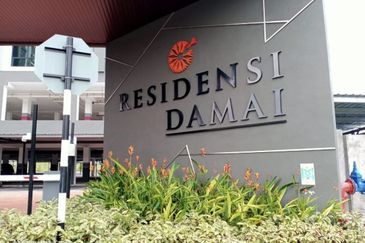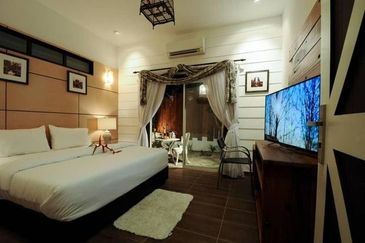EdgeProp-ILAM Malaysia’s Sustainable Landscape Award 2019 (Gold): Lepironia Garden
Lepironia Garden sounds like a mythical place in a fairy tale. In reality, the Lepironia is an aquatic plant and Lepironia Garden is the name of one of the semidee projects in S P Setia Bhd’s Setia Eco Glades township in Cyberjaya. The garden was a Gold winner of EdgeProp-ILAM Malaysia’s Sustainable Landscape Award 2019, which is part of EdgeProp Malaysia’s Best Managed Property Awards 2019.
“When we visited the site back in 2011, we noticed that there were many ponds and growing along those ponds were Lepironia plants. We decided to maintain the original species as part of the landscape. One of the advantages of this plant is that it actually prevents erosion by stabilising the base of the ponds. Not only that, it also absorbs toxins and heavy metals in the water, thus purifying it while providing crucial shelter for small birds as well as fishes,” says Setia Eco Glades general manager Goh Tzen Sernz.
Lepironia Garden is located in one of the housing precincts in the 268-acre Setia Eco Glades. The 20.66-acre project comprises 194 semidee homes which were launched in October 2012. About 37% of the project are green spaces with a 2.9-acre central garden, a total of 2.7 acres of streetscape and a two-acre Orchard Garden.
To reduce the heat and glare from the sun while providing effective rain protection, S P Setia has planted groves of predominantly middle to emergent tiered trees. The wetlands in the township have also inspired elements such as the Floating Pavilion, bridges above waterways and a stepping stone walkway. Of note are the butterfly feeding stations situated around Lepironia Garden and the whole of Setia Eco Glades. Some 20,000 butterfly food and nectar plants were propagated and planted to attract the various species of butterflies.
Spending more initially to save cost later
To ensure long-term sustainability of the common landscaped areas, plants such as the Lepironia have been chosen for Lepironia Garden as they are low maintenance and easy to care for in the long run.
“The Lepironia plants are self-sustaining and drought-resistant,” Goh explains.
“We also planted fruit trees such as mango, rambutan, langsat and guava on a two-acre
Orchard Garden in Lepironia Garden. All these trees attract birds and squirrels. We did a survey and found many of the birds that were originally living here actually flew back after the completion of Lepironia Gardens,” says Goh, adding that about 1,500 trees were transplanted with the help of the Forest Research Institute Malaysia and planted along the fringes of Setia Eco Glades with a success rate of 95%.
Meanwhile, in order to keep the water in the lake in Lepironia Garden clean and fresh, the developer introduced a pond liner to act as a separator between the soil and water.
“The colour of the lake water can turn brownish if there is high mineral content from the soil such as iron and magnesium. We spent about RM4 million to build a water filtration plant to ensure a continuous flow of water so that the water is not stagnant. When the water moves, it also improves aeration which also leads to fewer mosquitoes. The plant is only switched on four hours a day to save electricity. Even when we were doing earthworks for the lakes, we made sure it is carried out all at once,” Goh shares.
According to him, one of the key factors in ensuring cost sustainability in the landscaping of Lepironia Garden was to spend more on the capital expenditure so that operating expenditure can be reduced later on.
“We utilise LED lights at Lepironia Garden including the patio lights, deck lighting and so forth. In fact, we do that for the entire Setia Eco Glades. LED lighting uses at least 75% less energy and lasts 25 times longer than incandescent lighting. We also installed solar bollard lighting in Lepironia Garden to illuminate open spaces.
Although the cost of one solar bollard lighting can go up to RM6,000 to RM8,000, the lithium battery is encased in polyurethane, and requires no maintenance or changes for up to eight years. This will effectively translate to cost savings for the residents,” he explains.
Currently, the residents staying in Lepironia Garden are paying maintenance fee of 15 sen psf, which translates to an average cost of RM550 per month.
Most of the initiatives above are the result of S P Setia’s continuous effort to improve on the quality of their projects by learning from past projects.
At the end of the day, Goh says that as a responsible developer, it is important to set the right foundation for the residents to ensure that sustainability practices can be carried out long after the developer hands over the development to the residents.
“We understand that in a stratified development, you need to hand over the management to the residents eventually.
The Management Corporation members (MC) are not professional [property managers], they are just volunteers who want to ensure that their property is managed and maintained well. Thus, we have come up with a template of procedures and policies which the MC will find easy to follow, even after we are no longer here. Of course, the MC is free to decide what works best for them but we are always here to provide support and advice whenever necessary. Another thing is to never overbuild.
“Sustainability starts from the design stage. Always think of the long haul and whether it is practical and sustainable in the long run,” Goh concludes.
The highlights of the Awards:
An interview with Housing and Local Government Minister Zuraida Kamaruddin:
For an overview of the winners at the Awards: Tan Sri Jeffrey Cheah named Malaysia’s Exemplary Leader of Sustainable Development 2019
For more information about the Awards night and the winners, click here.
This story first appeared in the EdgeProp.my pullout on April 26, 2019.You can access back issues here.
TOP PICKS BY EDGEPROP

Bandar Baru Sungai Buaya
Hulu Selangor, Selangor

Setia Warisan Tropika (Belladonna)
Sepang, Selangor

Taman Desa Port Dickson
Port Dickson, Negeri Sembilan

Taman Sri Tanjung, Port Dickson
Port Dickson, Negeri Sembilan

4 Acres Industrial Land with Factory and Warehouse facilities
Bidor, Perak
























